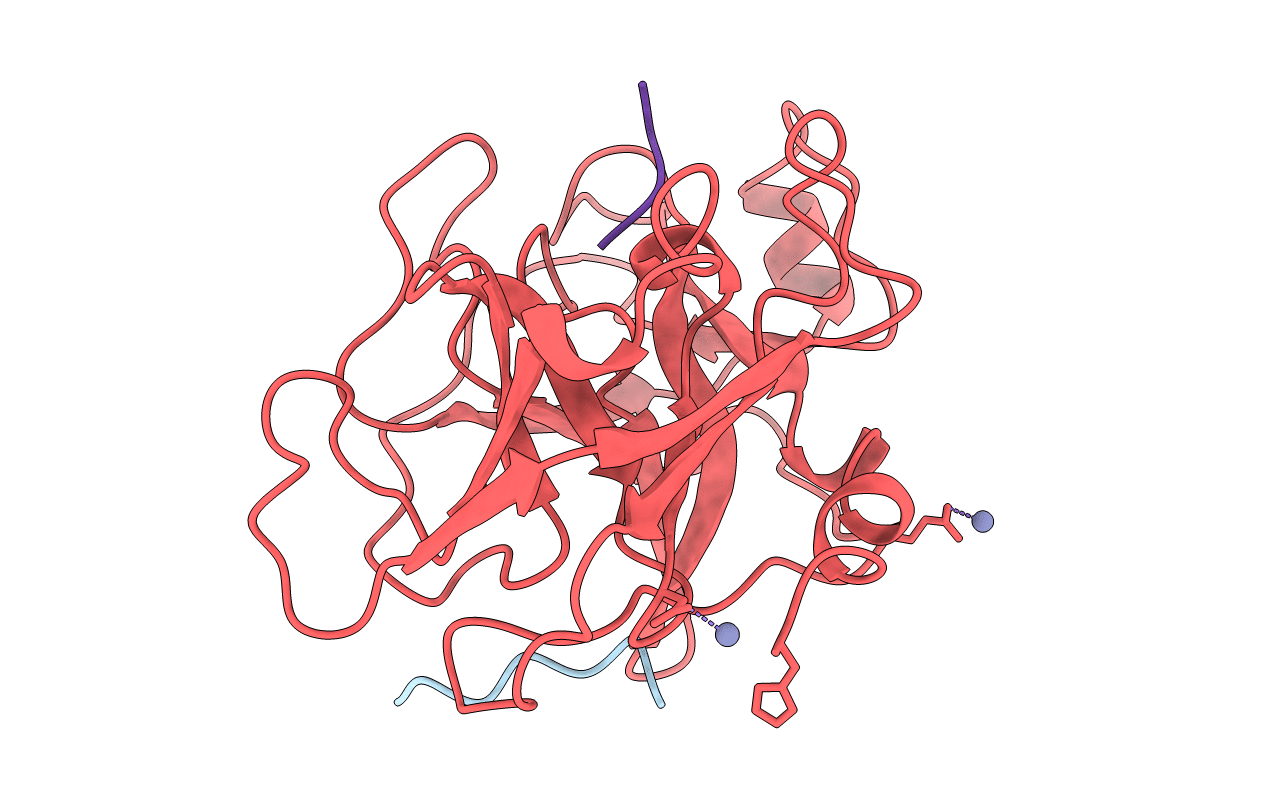
Deposition Date
1999-05-02
Release Date
1999-10-14
Last Version Date
2024-11-06
Entry Detail
PDB ID:
1EKB
Keywords:
Title:
THE SERINE PROTEASE DOMAIN OF ENTEROPEPTIDASE BOUND TO INHIBITOR VAL-ASP-ASP-ASP-ASP-LYS-CHLOROMETHANE
Biological Source:
Source Organism:
Bos taurus (Taxon ID: 9913)
Host Organism:
Method Details:
Experimental Method:
Resolution:
2.30 Å
R-Value Free:
0.26
R-Value Work:
0.23
Space Group:
P 21 21 21


